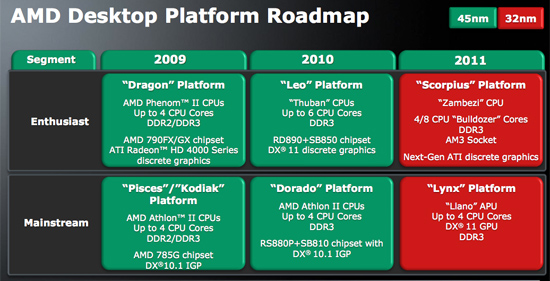If I read the small print correctly, AMD isn't even banking on improved IPC.
http://www.anandtech.com/Gallery/Album/754#6
To me that reads like: "Okay, there will be a loss on serial single-threaded workloads, but we managed to keep this loss under control, so it's not going to be significant."
So the approach seems to favour parallel workloads, more cores per die, less transistors per core... that sort of thing. But not better IPC.
I kind of got the impression that the improvements would be minimal, but as you said, favoring highly threaded apps over single threaded apps. They are deepening the pipeline, and if I am reading into things correctly, Integer performance MIGHT be pretty good for a single threaded app (Two integer units available depending on how well the internal scheduler works).
I am, however, generally interested to see how floating point arithmetic works on these things. Gleaning from the slides, it seems like it might take a big hit in multithreaded applications with large amounts of floating point math. Which says to me "Science applications and encoders, beware" Perhaps they are going to be pushing OpenCL like technologies for highly parallel floating point math.
Of course, if they are offering 8 cores, it seems almost like a hyperthreading type deal is going on in the background. Either way, operating system schedulers should probably be looking into what they will do for thread management on these puppies.
Interesting architecture. Hopefully it competes well with the i7/Nehalems.
------------------------------------------------
Now, onto the bobcats. Not much to say about these other then.
* I really hope they don't saddle these things with a CRAPTASTIC chipset such as intel did with the atom. It is a bad thing when your chipset consumes MORE power than your CPU.
* These will be interesting for things such as thin clients.
* I don't think they will break into the mobile market any time soon. x86 + Mobile just does not mix well. Rather, discrete computing environments seems a more fitting place for these things, such as HTPCs.
* I really hope the integrated GPU included is better than intels GPUs. It would be nice to be able to do SOMETHING with this thing's GPU.
All in all, More numbers/demos would really be nice. When are they planning on releasing these things?





